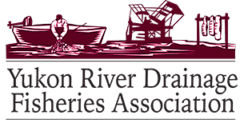Multiple salmon (Oncorhynchus sp) and whitefish species (Coregoninae subfamily) are known to utilize habitats within the Yukon Flats, and the Draanjik River (Black River) drainage at multiple stages in their life cycles for migration, spawning, and rearing. However, while their presence is known, the extent of their anadromous geographic distribution is not fully identified and documented within the State of Alaska’s Anadromous Waters Catalog (AWC). This project collected local and traditional ecological knowledge (LTK) of anadromous species within the Yukon Flats region, and documented spawning and rearing activity within the Draanjik River drainage. This project was designed to address the Yukon Region Priority Information Need of geographic distribution of Pacific salmon and whitefish species. The information provided by this project is critical to the management of anadromous salmon and whitefish species and the habitat utilized by them throughout their life cycles. The objectives of this project included documentation of LTK of anadromous waters utilized by salmon and whitefish species occurring in the Yukon Flats with a focus on the Draanjik River drainage; verification of the presence of
salmon and whitefish species, and documentation of anadromous waters used for spawning and rearing as described by LTK, primary literature, and field observations for the Draanjik River drainage; submittal of nominations to the AWC for all verified water bodies used by salmon and whitefish species to maximize the spatial extent of mapped anadromous waters; and engagement with the local communities and building capacity by collaboration with the Tribal Councils and by hiring local research technicians who assisted with the ethnographic and biological research. This project was designed as a partnership with the Tribal Councils (TC) of Chalkyitsik, Venetie, and Gwichyaa Zhee with the TCs selecting local research assistants for the ethnographic fieldwork. Local hires were trained in interview and mapping techniques. This project was designed to be a collaborative project, seeking and confirming locally observed contributions to the AWC, using a combination of social and biological methods and collaborating amongst agencies and communities. Broadly, researchers engaged standard anthropological methods of ethnographic fieldwork (participant observation, semi-structured interviews, and mapping) to identify potential search areas based on local knowledge. Next, researchers used a combination of fisheries techniques to document and identify migrating, spawning, and rearing habitats used by salmon and whitefish as identified by local knowledge. This project resulted in several nominations to the AWC for multiple life-stages of salmon, whitefish, and arctic lamprey.

